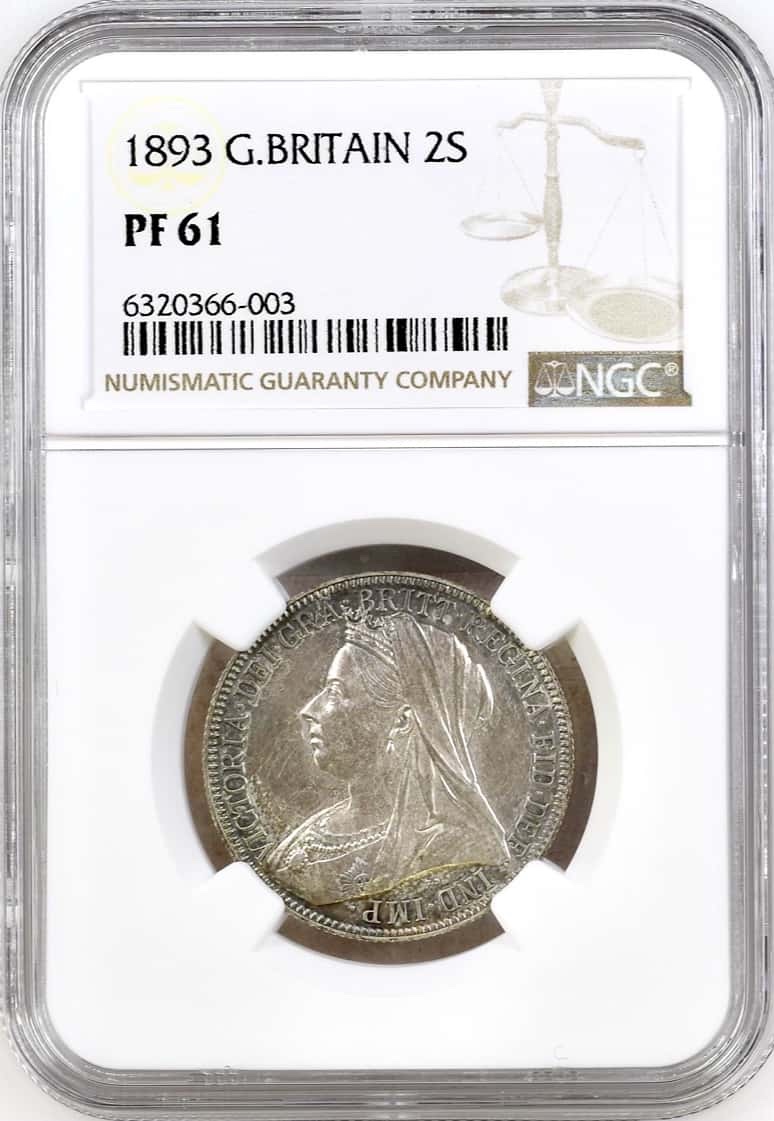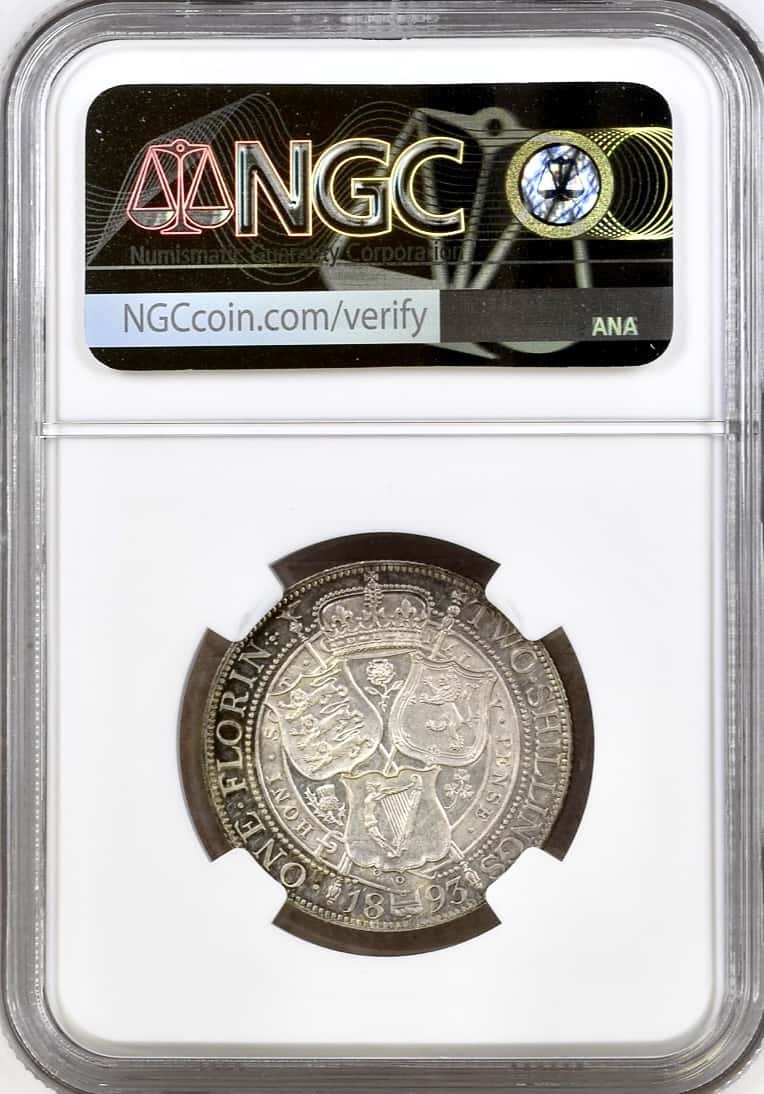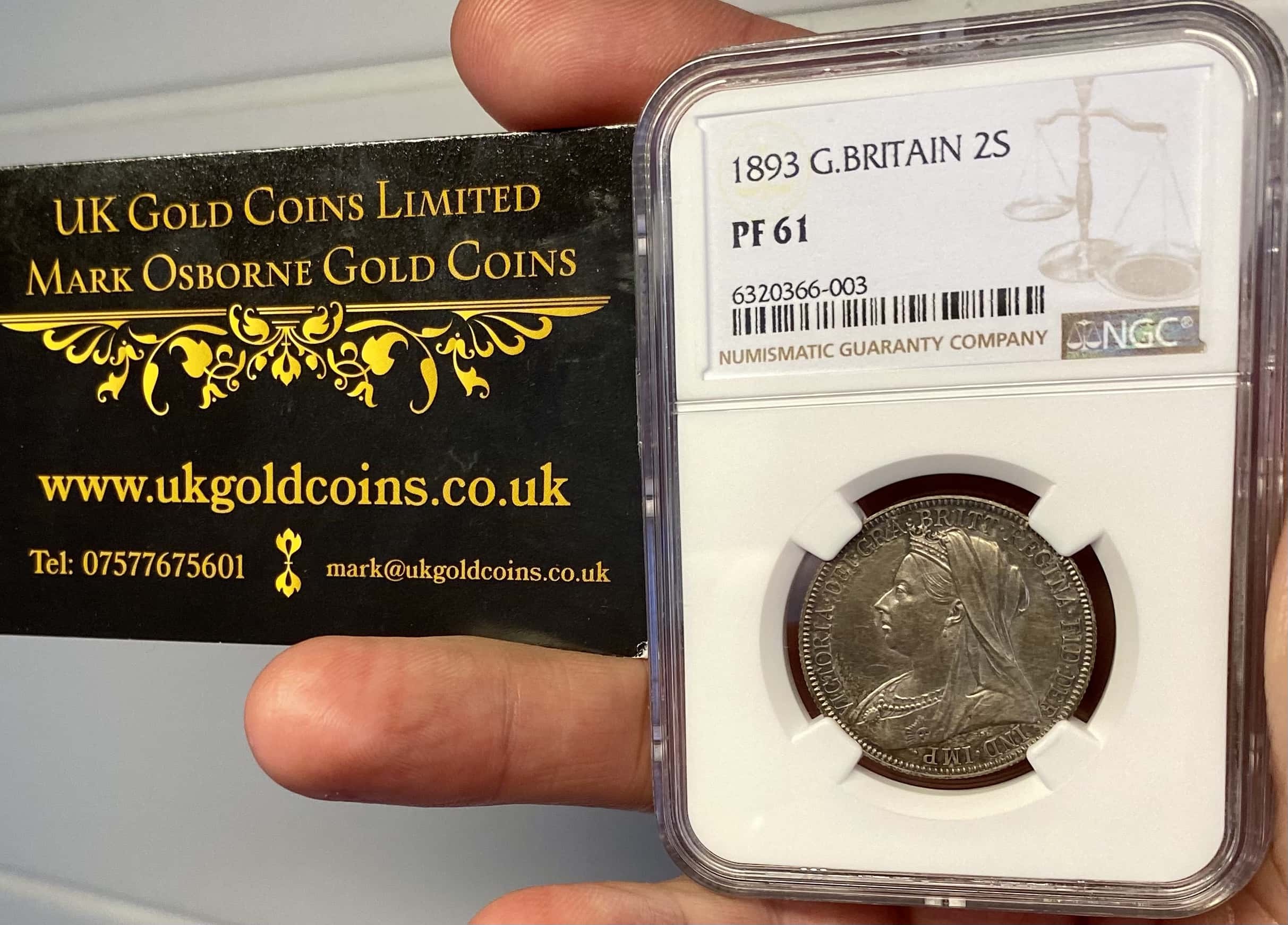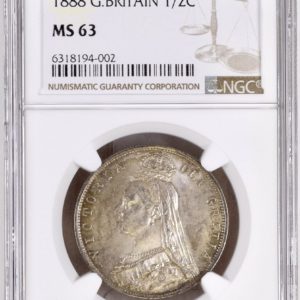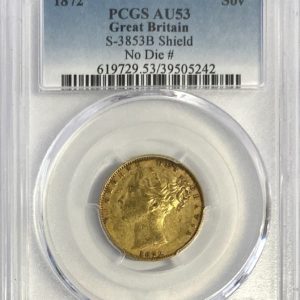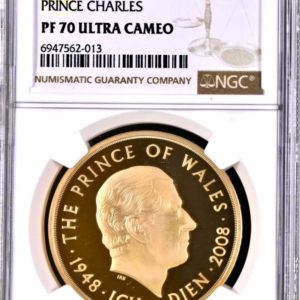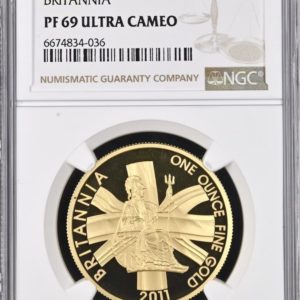Mintage: 1312
The obverse of the coin features the crowned bust of Queen Victoria facing left and wearing a widows's veil in mourning for her husband Prince Albert - her last official effigy (by Sir Thomas Brock), known also as the Veiled Head or Old Head.
The veil of a widow falls over the back of her crown; she wears a pearl necklace and a pendant; on the left lapel of the mantle, exhibited full-face, is the ribbon and Star of the Garter, part of the outer edge of which is covered by the veil.
In the field below the bust in small letters are the artist's initials T.B..
Around, the monarch's legend: VICTORIA · DEI · GRA · BRITT · REGINA · FID · DEF · IND · IMP ·. Translated from Latin: Victoria, by the Grace of God, of the Britains Queen, Defender of the Faith, Empress of India.
There reverse of the coin features, partly within the Garter of the Order of the Garter, three shields with the arms of England (top left) featuring three lions walking to left, Scotland (top right) featuring a rampant lion, and Ireland (below) featuring a harp. They are collectively crowned with St Edward's crown. Between the shields, a rose (above), thistle (below left) and shamrock (below right), the floral emblems of England, Scotland and Ireland respectively. Behind the shields, two crossed sceptres - one surmounted with an eagle, and one with an orb and cross.
The Garter surrounding the shields is inscribed with the Royal motto HONI · SOIT · QUI · MAL · Y · PENSE ·, partly obscured by the shields. "Honi soit qui mal y pense" is an Anglo-Norman maxim which means "Shame on whosoever would think badly of it".
The Garter is surrounded by a beaded circle. In the outer rim, around above, interrupted by the crown, the value and denomination · ONE · FLORIN TWO · SHILLINGS; below, divided by the pendant of the Garter, the date of issue 1893.
The pre-decimal florin (2s) was a unit of currency equalling two shillings, or one tenth of a pound sterling, or twenty-four pence. There were three types of florin issued before this one: the so-called Godless Florin (1848 and 1849), followed by the Gothic Florin (1851 - 1887) and then the Jubilee Florin (1887 - 1892).
This three shields design was introduced in 1893, and is consistent with the contemporary shilling. Its reverse represents England, Ireland and Scotland - constituent parts of the United Kingdom; Wales is not represented. This design was short lived too, and was superseded by the Britannia Florin at the beginning of the reign of King Edward VII in 1902.
The composition is Sterling Silver (0.925 silver) and the coins have 0.3364 oz ASW (ounce of Absolute Silver Weight). When the currency became decimal in 1971, by which point the denomination was already debased to copper-nickel, florins were re-denominated as ten new pence; they remained legal tender until 1993, when a smaller type of ten pence replaced them. Thus, a florin coin issued in 1893 was legal tender for 100 years.
